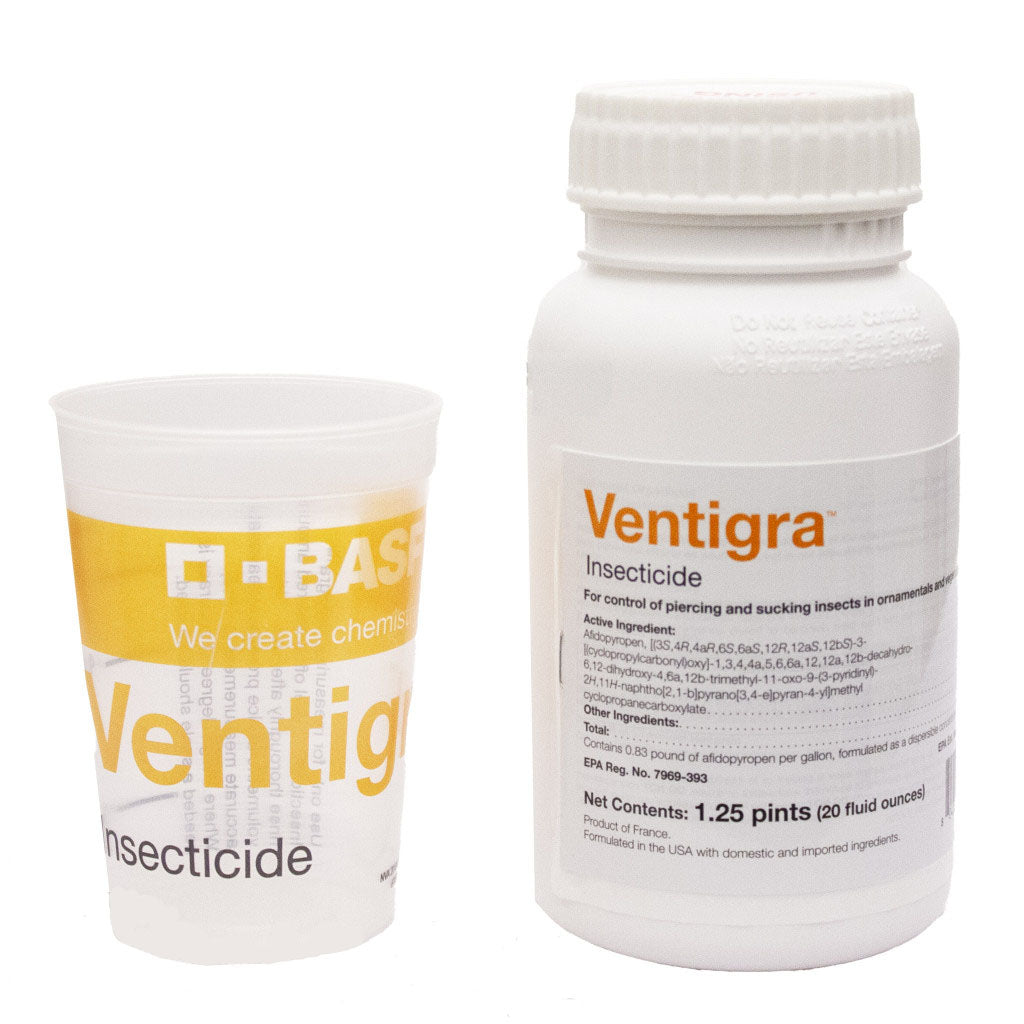Description
- Description
- Features and Benefits
- Specs
- Labels and SDS Forms
Ventigra Insecticide from BASF is an innovative solution for managing piercing and sucking insect pests in production and landscape ornamentals and vegetable transplants. Powered by the active ingredient Afidopyropen, Ventigra effectively targets and controls whiteflies, aphids, and certain mealybugs while suppressing scale insects. Its unique mode of action is effective against pests that have developed resistance to other insecticides, making it a valuable tool for resistance management. With a favorable environmental profile, Ventigra is safe for beneficial insects, pollinators, and non-target species, ensuring exceptional plant quality and long-lasting pest control.
- Targets piercing and sucking pests such as whiteflies, aphids, and mealybugs
- Suppresses scale insects and other specific species
- Unique mode of action combats resistant insect populations
- Safe for beneficial insects, pollinators, and non-target species
- Ideal for ornamentals and vegetable transplants
- Long-lasting control with excellent compatibility in Integrated Pest Management (IPM) programs
| ACTIVE INGREDIENT | Afidopyropen - 9.78% |
| TARGET PESTS | Piercing and sucking insects. |
| FOR USE IN | Ornamentals and vegetable transplants. |
| APPLICATION | May be used for ground or aerial applications. Thorough coverage is required to obtain optimum insect control. |
| UPC | 8.04338E+11 |
| MANUFACTURER | BASF |
| EPA REGISTRATION | 7969-393 |
| NOT FOR SALE TO | NY (Restricted To Licensed Applicators) |
Payment & Security
Your payment information is processed securely. We do not store credit card details nor have access to your credit card information.












